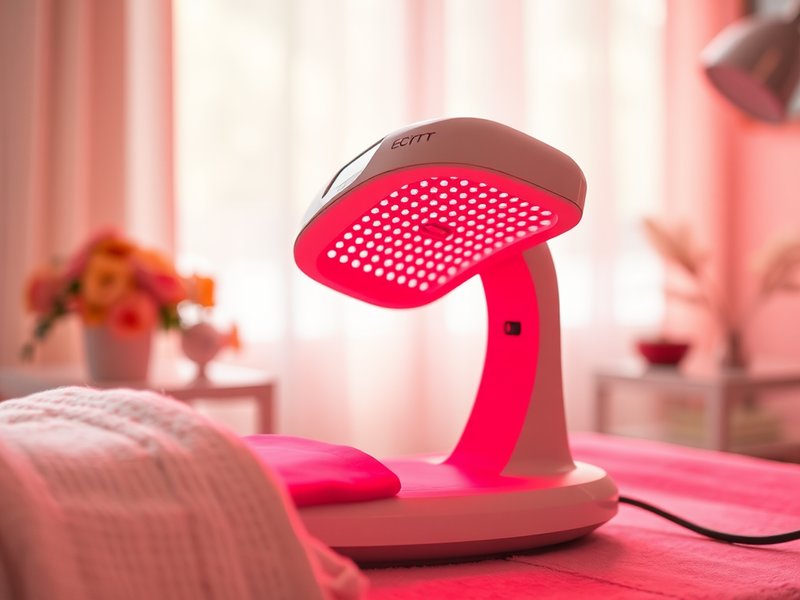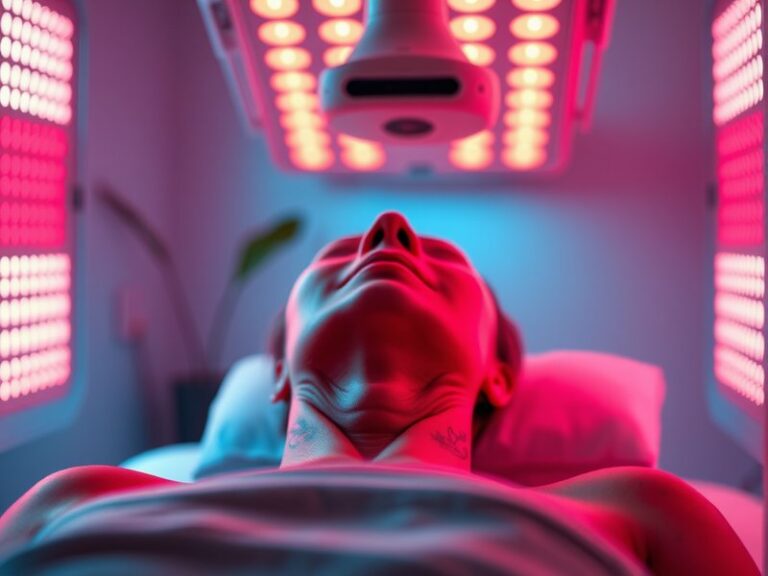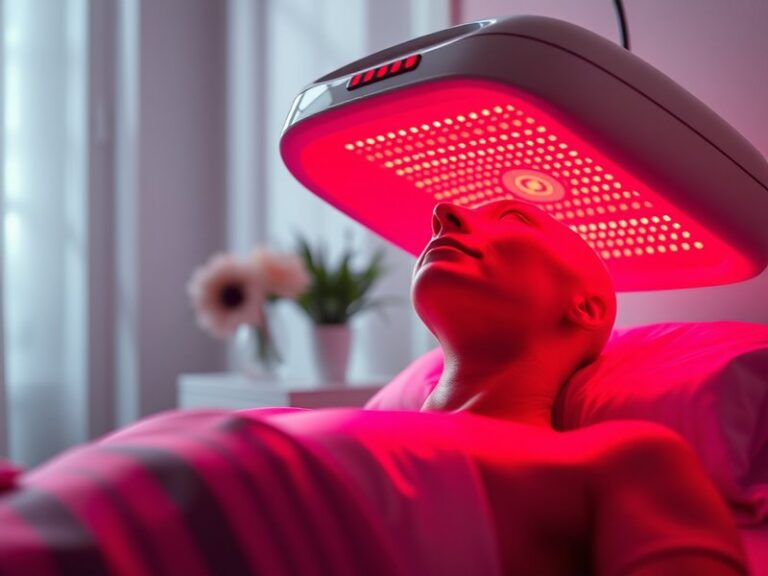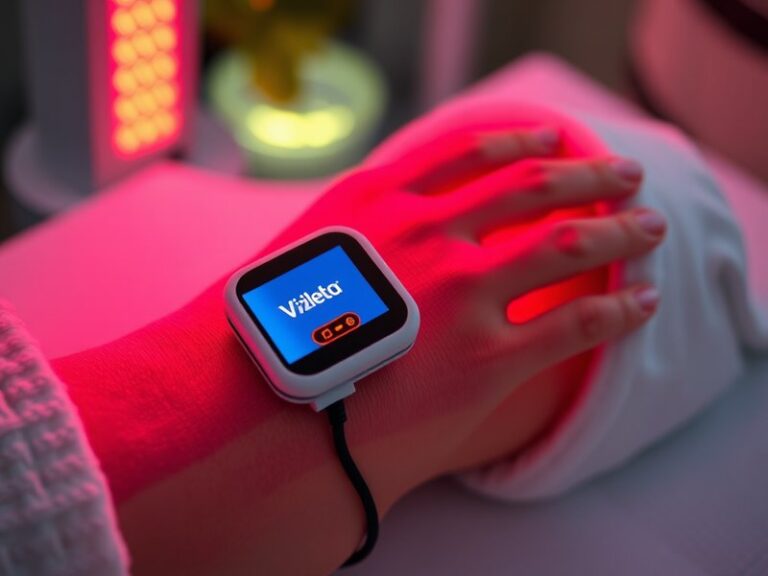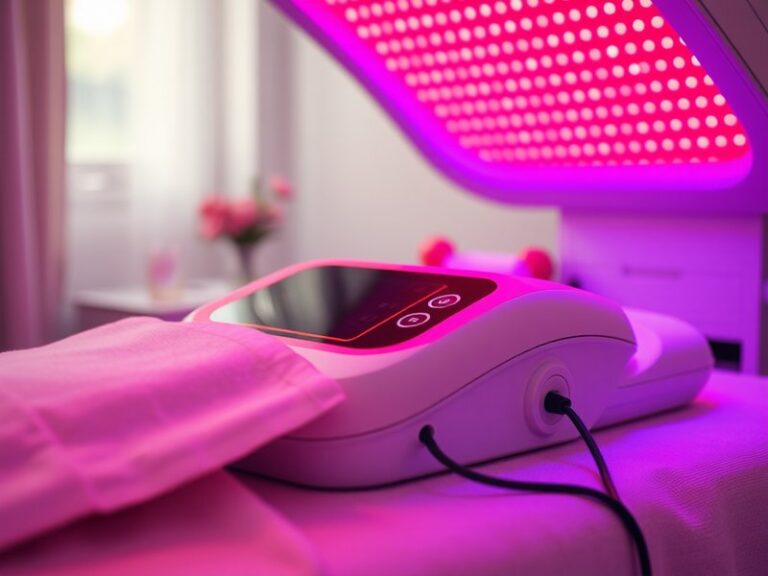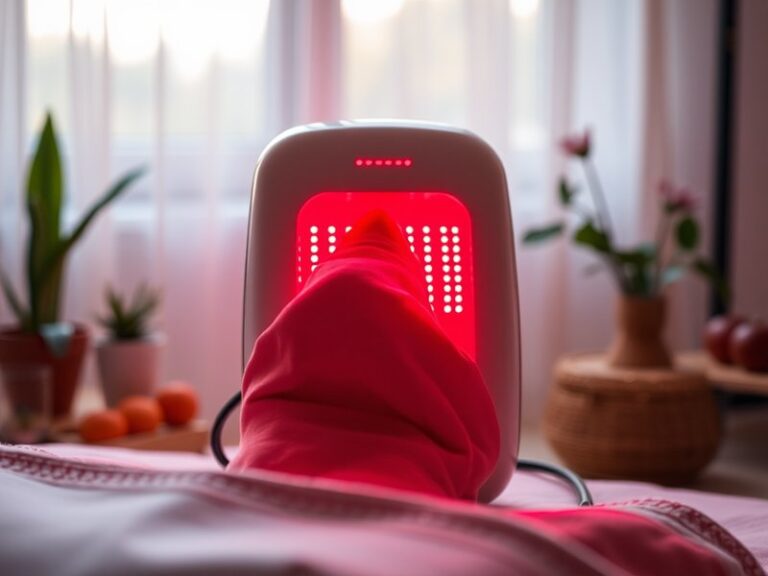What Are Red Light Therapy Benefits?
What Are Red Light Therapy Benefits?
Have you ever wondered how some therapies can help rejuvenate your skin or alleviate pain without invasive procedures? Red light therapy is one such treatment that’s rapidly gaining popularity.
In this article, we will explore the fascinating world of red light therapy, its benefits, how it works, and what you should keep in mind before trying it. By the end, you’ll have a clear understanding of whether this therapy might be right for you.
Key Takeaways
- Red light therapy promotes healing, reduces inflammation, and enhances skin appearance.
- It is a non-invasive treatment suitable for a variety of conditions.
- Personal precautions and consultation with a healthcare professional are essential before starting therapy.
What is Red Light Therapy?
Red light therapy (RLT) is a non-invasive treatment that utilizes low-level wavelengths of red light to penetrate the skin and promote healing. This therapy works by stimulating cellular processes, enhancing mitochondrial function, and increasing energy production in cells. It is commonly used for skin rejuvenation, wound healing, and reducing inflammation.
Originally developed for NASA astronauts to help heal wounds and injuries in space, RLT has since found a vast array of applications in health and beauty.
How It Works
Red light therapy operates by delivering specific wavelengths of light (typically between 600-650 nanometers) to the skin, which can penetrate tissues. This light has been shown to promote ATP (adenosine triphosphate) production in cells, leading to increased energy and function, thereby enhancing the body’s natural healing processes.
What are the Benefits of Red Light Therapy?
Red light therapy boasts a variety of benefits that make it an appealing option for many individuals looking to improve their health and well-being. Below are some of the main advantages associated with this therapy.
Enhanced Skin Health
One of the most popular applications of red light therapy is in skin care. RLT can improve skin tone, reduce wrinkles, and assist in the treatment of acne. Studies have shown that regular use can stimulate collagen production, leading to firmer skin and a reduction in fine lines and age spots.
Pain Relief and Reduction of Inflammation
Red light therapy has been shown to help alleviate chronic pain and inflammation. Conditions like arthritis, muscle strains, and joint pain can benefit from the soothing effects of RLT as it promotes blood circulation and reduces swelling.
Wound Healing and Recovery
After surgery or injury, RLT can expedite the healing process. The therapy accelerates tissue repair, reducing recovery time significantly. Athletes often use red light therapy to recover more quickly from injuries and to enhance their overall performance.
Improved Mood and Sleep Quality
Emerging research suggests that red light therapy can also improve mood and sleep quality. Exposure to certain wavelengths has been linked to the modulation of melatonin production, which can promote better sleep patterns.
Boosted Hair Growth
For those experiencing hair loss or thinning, red light therapy can stimulate hair follicles and promote regrowth. Studies indicate that RLT can enhance hair density and overall scalp health.
Is it Possible to Use Red Light Therapy at Home?
Yes, red light therapy can be conveniently performed at home with the use of specialized devices, such as LED lamps or handheld devices. These devices are designed for safe home use and can be effective in delivering the desired benefits.
What are the Advantages of At-Home Red Light Therapy?
Using red light therapy at home provides significant advantages, including convenience and cost-effectiveness.
Cost Efficiency
Home devices can be a one-time investment, reducing the need for regular appointments at a clinic or spa.
Flexible Scheduling
At-home therapy allows for flexible scheduling, enabling users to incorporate sessions into their daily routine without additional travel time.
Privacy and Comfort
Using red light therapy at home allows for privacy and the comfort of one’s own space, making it an appealing choice for many users.
What are the Disadvantages of At-Home Red Light Therapy?
While at-home red light therapy offers several benefits, there are also disadvantages to consider.
Limited Professional Guidance
Without a healthcare provider’s oversight, individuals may not receive personalized treatment recommendations or proper guidance on usage.
Variability in Device Quality
The market for at-home RLT devices is vast, and not all products are created equal. It is essential to research and choose high-quality devices to ensure efficacy.
Potential for Misuse
Improper use of devices, such as incorrect distance or duration, can lead to suboptimal results or skin irritation.
What are the Things to Consider Before Trying Red Light Therapy?
Before starting red light therapy, it’s essential to consider several factors to ensure a safe and effective experience.
Consultation with a Healthcare Professional
Always consult your doctor or a qualified healthcare professional before starting any new therapy, especially if you have underlying health conditions or are pregnant.
Understanding Device Specifications
Research the specifications of your red light therapy device, focusing on wavelength, power output, and treatment area to ensure you are getting a quality product.
Read the deep dive on Red Light Therapy Frequency
Setting Realistic Expectations
Like any therapy, results can vary from person to person. Setting realistic expectations about outcomes and timelines can help avoid disappointment.
What are the Alternatives to Red Light Therapy?
There are several alternative therapies and treatments that individuals may consider for similar benefits.
Cold Laser Therapy
Cold laser therapy, like RLT, uses light to stimulate healing. It may be more suitable for specific conditions and can be performed in a clinical setting.
Infrared Sauna
Infrared saunas use heat to promote healing, relaxation, and pain relief. They work by delivering infrared light, which penetrates the skin for holistic benefits.
Topical Treatments
Many topical creams and serums contain ingredients like retinol or hyaluronic acid, which can enhance skin health. While they are not light-based therapies, they often aim to achieve similar benefits.
Conclusion: Is it Recommended to Try Red Light Therapy?
Red light therapy presents a multitude of promising benefits, from enhancing skin health to promoting wound healing and pain relief. While at-home options offer convenience, it’s crucial to approach them with adequate knowledge and guidance. Consulting a healthcare professional can provide valuable insight, helping you make an informed decision about whether red light therapy is right for you.
See our thorough exploration of Does Red Light Therapy Work on Makeup?
Frequently Asked Questions
What conditions can red light therapy treat?
Red light therapy has been shown to treat various conditions, including acne, psoriasis, wrinkles, hair loss, chronic pain, and arthritis. It may also enhance recovery from injuries and improve overall skin health.
How often should I use red light therapy?
The frequency of red light therapy can vary based on individual needs and the device used. Generally, 3 to 5 times a week for 10 to 20 minutes per session is recommended, but consulting a professional for specific advice is prudent.
Are there any side effects of red light therapy?
Red light therapy is generally considered safe with minimal side effects. Some individuals may experience temporary redness or irritation, but serious side effects are rare.
Can I use red light therapy if I have a medical condition?
If you have a medical condition or are undergoing treatment (such as taking photosensitizing medications), it is essential to consult with a healthcare provider before starting red light therapy.
How long does it take to see results from red light therapy?
Results from red light therapy can vary depending on the condition being treated. Some individuals report noticing improvements within a few sessions, while others may take several weeks to see significant changes.
